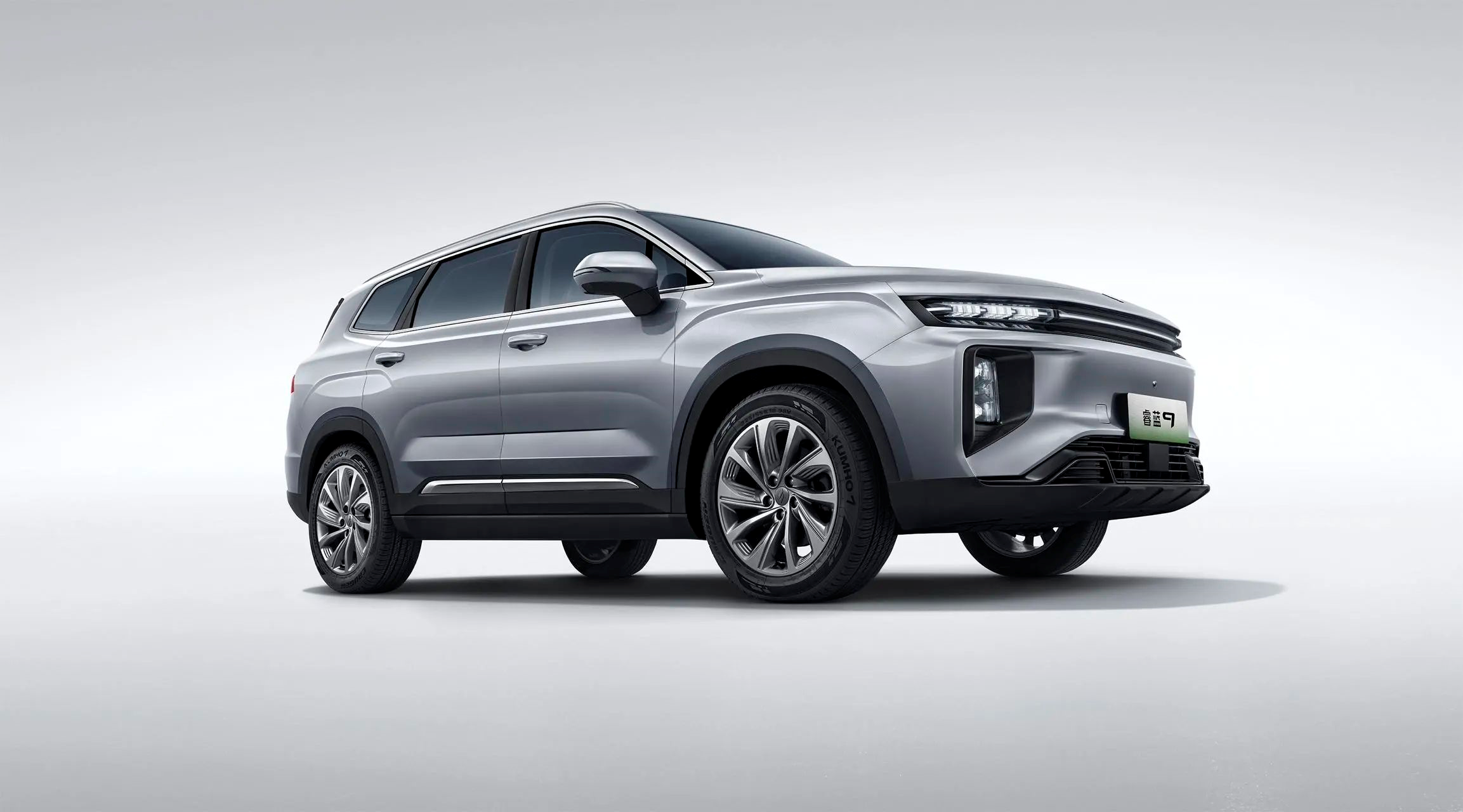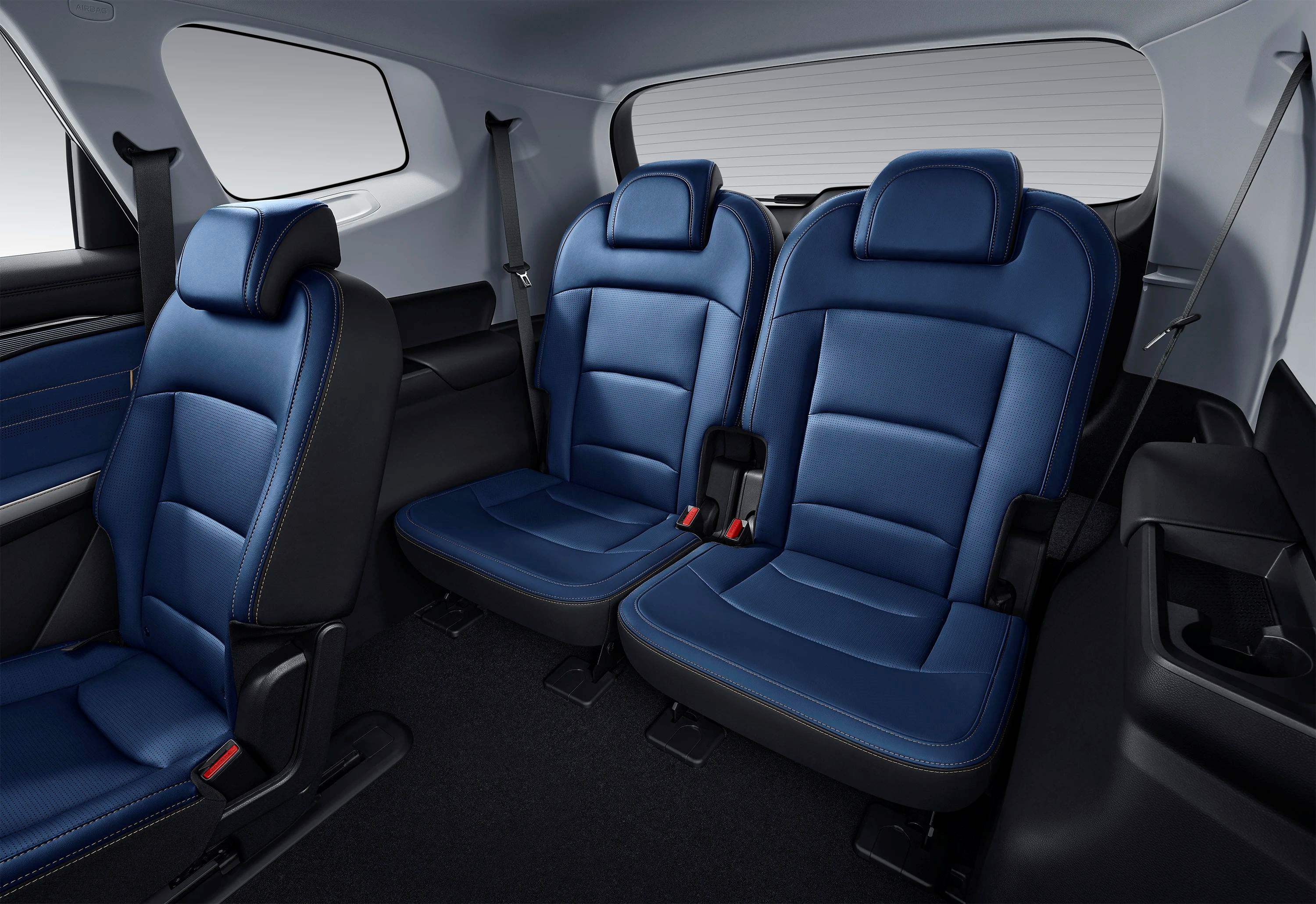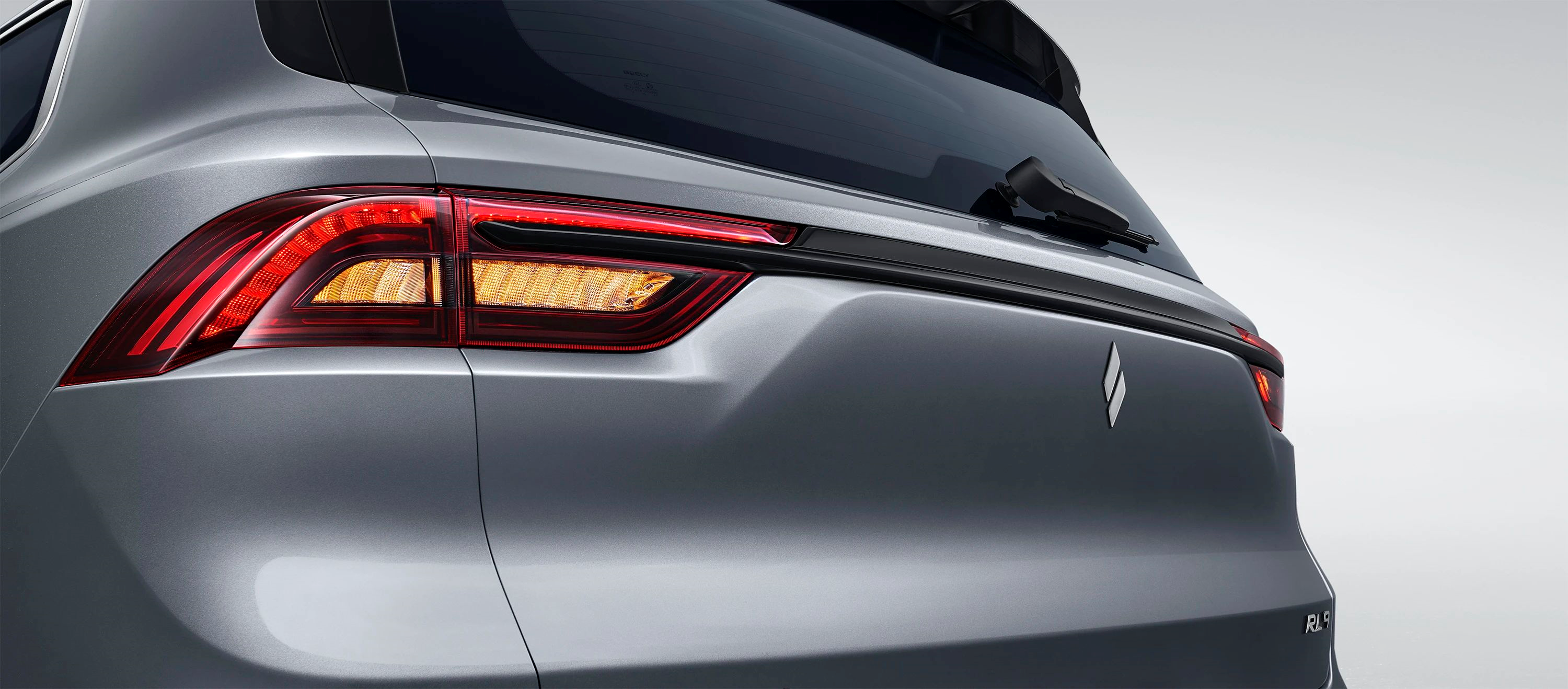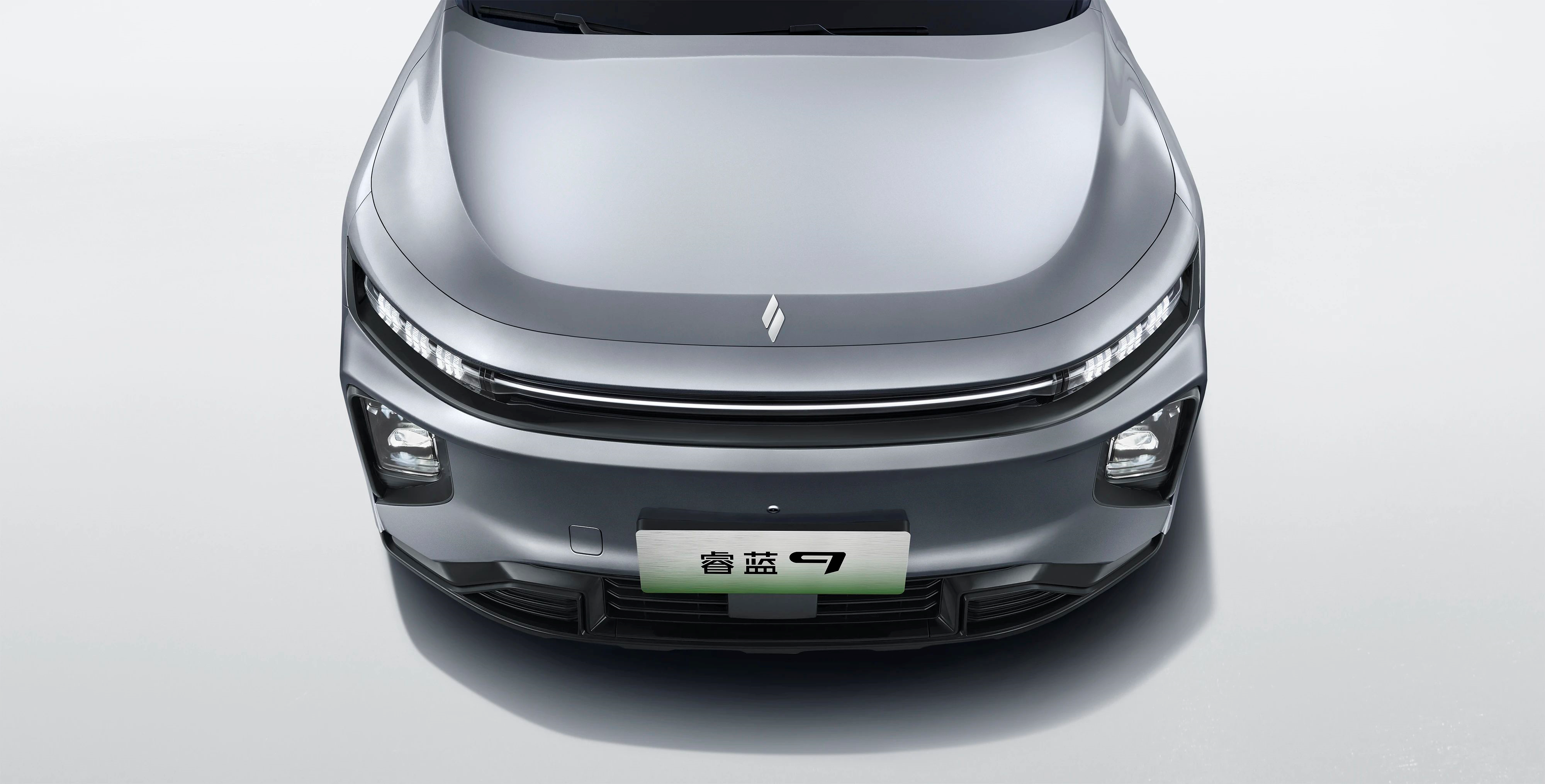Author | Zhu Shiyun
Editor | Qiu Kaijun
“More, Faster, Better, Cheaper.” Chinese brands have started to duplicate the successful model of the fuel vehicle era in the electric smart car arena, using technological equality to expand the market.
On December 17th, The Blue Whale Automobile, a joint venture established less than a year ago between Geely and Lifan, is releasing its first C-terminal SUV product, the Blue Whale 9, which leads the pack of large SUVs that can be recharged and replaced, targeting the rapidly growing 100-200,000 RMB new energy vehicle market.
Before the Blue Whale 9, the new energy B-class SUV market for household use, dubbed “Dad Cars,” had already been proven to have strong market demand through best-selling models such as Nio ES8 and Ideal L9, but the prices of 400-500,000 RMB have made “Dad Cars,” a universal demand, into “high-end” luxury.
Can Blue Whale 9 succeed in building the egalitarian car at the 200,000 RMB level to provide “Dad Cars” for more users?
The Blue Ocean Market of Latecomers
Blue Whale, which entered the market in the second half of the electrification phase, seems to have come a bit late.
The new car-making forces in the high-end new energy market priced above 400,000 RMB, Chinese high-end brands, and foreign luxury brands, have already begun to “fight to the death”; the less than 100,000 RMB mini electric vehicles in the on-foot pure electric market have already achieved platformization by offering price-performance ratios; the 100-300,000 RMB medium-end market is dominated by BYD, but major medium-end product brands have already put forth products and quickly went offline.
In this context, how can a blue ocean be “cut out?” Blue Whale’s strategy is to expand the high-end “Dad Car” market, which has already been fully validated, into the mainstream consumer segment of the middle end. This is undoubtedly a smart choice.
According to data, new energy SUVs are one of the few segments that have continued to grow since 2020. By September 2021, their market share had reached 39.7%, an increase of 14.4 percentage points compared to 2020. Moreover, compared to the overall passenger car market, SUVs in the new energy market are expected to grow by a further 6%. Among them, the share of B-class products has already accounted for 35% of the overall new energy SUV market, second only to A-class SUVs.

**It is worth noting that the main selling prices of B-class new energy SUVs are concentrated in the price range above 250,000 yuan, while the 200,000 yuan level market is still a blue ocean.**
According to the statistics of "Electric Vehicle Observer", after the launch of L9 in the middle of the year, the average transaction price of Ideal ONE's Q3 has increased from 300,000 yuan at the beginning of the year to 350,000 yuan. Meanwhile, the single-vehicle transaction price of NIO ES6, ES7, and ES8 has remained at around 380,000 yuan.
In terms of sales volume, the quarterly deliveries of Ideal ONE and NIO have remained at a high level of 25,000-35,000 units since 2021, not to mention the delivery growth of the dark horse WM Motor from 30,000 to nearly 50,000 units in Q2 and Q3 of this year. These fully demonstrate the strong market demand for medium and large-sized new energy SUV models.
**However, it should also be noted that most of the current medium and large-sized new energy SUV products are concentrated in the price range of 250,000-400,000 yuan, which is due to their facing multiple usage scenarios such as family travel, cargo transportation, and long-distance self-driving, all of which have high requirements for space, power, intelligence, and efficiency, thereby "raising" the product's underlying BOM cost.**
Can Rui Blue 9 create a low-priced "daddy car"?
## Pure electric intelligent B-class SUV at 200,000 yuan level
**With the backing of technology, every category is worth redoing. Rui Blue 9 has indeed created a low-priced "daddy car" that meets demand.**
Firstly, space is a must-have for "daddy cars". Rui Blue 9 has a wheelbase of 2825mm and a body size of 4845*1890*1778mm, slightly smaller than Ideal L9 and similar to the body size of NIO ES7 and GAC Toyota Highlander, within the mainstream range of medium and large-sized SUVs.

Rui Blue 9 offers two space layouts, 6-seater and 7-seater, which can meet the core needs of second-child families and family outings. It is worth noting that the third-row space of Rui Blue 9 is also quite ample, with head and legroom reaching 963mm and 886mm respectively, much larger than those of the equivalent Highlander and Volkswagen ID.6.
Moreover, the third-row cushion is 300mm high. Generally, the third-row cushion height of seven-seater cars on the market, such as the Highlander, is generally around 260mm, so the higher sitting posture is more comfortable. The third-row backrest can also be adjusted in 8 gears to 16 degrees, and the roof has a concave design for headroom, allowing even a 1.8-meter-tall male to sit down easily. These fully demonstrate the skillful application of spatial magic by Geely, the old hand in car manufacturing.
Comfort configurations such as zero-pressure seats, CN95 efficient car-grade composite air conditioning filters, AQS air quality management system, negative ion generator, and eco-friendly materials strive to allocate costs to a more essential aspect to meet the quality requirements of families and outdoor travel.
Intelligence is the core difference that sets the new generation of “dad cars” apart from traditional large SUV products in the era of fossil fuel cars.
Built on the pure electric native GBRC crystal architecture, the Roewe i6 provides reliable and practical smart cockpit and smart driving capabilities that are on par with the current mainstream intelligence level.

Built on the E02 new high-performance digital cockpit platform, the Roewe i6 is equipped with the Roewe crystal virtual interactive assistant, which can achieve smooth natural semantic interaction. Furthermore, the Baidu Honghu intelligent speech interaction processing platform guarantees its real-time capability and realizes continuous iterative upgrading of speech interaction capability through data closed-loop.
In addition, there is an 8-inch W-HUD precise interactive projection and a dual 12.3-inch central control/instrument panel high-definition large screen combination to achieve various forms of human-machine interaction capabilities.
On the intelligent driving side, Roewe i6 provides 13 L2 intelligent driving assistance functions, including ACC full-speed adaptive cruise control system, city pre-collision safety system, pedestrian recognition protection system, lane keeping assistance system, and lane departure assistance system, offering reliable and user-friendly intelligent driving systems.
Roewe i6 with swappable battery
Uniqueness is the core barrier to maintaining an advantage in the blue ocean.
In addition to the two core user benefit points of space and intelligence, Roewe i6 also has its own “unique skill” – the ability to change battery in one minute, allowing mid-range mainstream consumers to enjoy the high-end charging mode of Nio’s 500,000 yuan level.
Roewe Automobile’s positioning is as a “swappable battery light mobility popularizer”, and the GBRC crystal architecture used by Roewe i6 has three major patented technologies: fast locking body, fast battery connection, and fast water connection. It can guarantee stable battery swapping for more than 10,000 times, and even frequent disassembly and assembly of batteries will not cause safety problems. In combination with the swappable battery mode, Roewe has also launched a capsule battery that can be sustainably upgraded. It has achieved standardization with consistent outer dimensions and can adapt to all Roewe swappable battery models.
Currently, the Roewe ER9 is equipped with a 66.57kWh battery with a range of 470 kilometers. Upgrades to 80 kWh and 100 kWh are available, resulting in ranges of 600 and 700 kilometers, respectively.
One-minute fast battery swapping may help new energy vehicle users achieve refueling efficiency similar to that of traditional gasoline vehicles, but its real usefulness depends on the construction of high-quality supporting facilities.
The intelligent battery swapping stations within the Roewe brand’s battery-swapping eco-system come in two formats: single- and double-warehouse designs. They can respectively support more than 300 and 600 swap services per day. The smart, networked system is linked with cars, stations, batteries, and the cloud, and is equipped with a three-level fire prevention system to prevent accidents and ensure safe battery swapping.

The Roewe ER9 does not make any compromises just because it can swap batteries.
The high-performance motor system used by the Roewe ER9 has a maximum efficiency of up to 94%, and peak power of 150kW, enabling acceleration of 0-50km/h in 3.53 seconds.
Of particular note, the Roewe ER9 uses a Roewe super heat pump system that can operate normally in a wide temperature range from -30℃ to 43℃, effectively increasing the driving range by 30% in winter.
Chinese Technology Supporting Chinese Brands
The foundation of equal rights to automobile manufacturing lies in technology accumulation.
From December 13, 2021, when Geely announced the formation of a joint venture with Lifan Technology, to January 24, 2022, when “Chongqing Roewe Automotive Technology Co., Ltd.” was named, to the brand’s debut in front of C-end customers at a launch event on June 21, and finally, to the launch of the brand’s first mid-sized SUV with swapable batteries on December 17, Roewe fully embodies what is meant by “Chinese speed.”
It is worth noting that the “Chinese speed” of the new era is no longer supported by the hard work of 996 or 007, but is a product of the deep technological accumulation of Chinese brands over the past thirty years.
 “`
“`
GBRC crystal vehicle technology platform adopts a systematic and modular design, supporting wheelbases ranging from 2700mm to 3100mm, compatible with various types of vehicles such as sedans, SUVs, and MPVs. The architecture can be equipped with multiple powertrains, providing a combination of 100 kW, 120 kW, and 155 kW power motors to realize front-wheel drive, rear-wheel drive, four-wheel drive, and power output.
On this platform, Geely and Lifan have introduced technical capabilities including battery swapping, capsule batteries, high-performance motors, heat pumps, and intelligent cockpit and driving systems. They quickly launched a low-priced “daddy car” tailored to market needs, taking the lead in the blue ocean market.
Conclusion

For the past 20 years, Chinese automakers have become strong competitors of many international brands through persistent efforts and hard work, making China one of the core markets for global automotive industry’s heavyweight products and technology “global debuts”.
“Enduring loneliness for twenty years,” Chinese automakers have stood at the forefront of the global electrification and intelligence race thanks to enterprise innovation and technological accumulation. They can not only compete with international brands, but also enable more Chinese consumers to enjoy the convenience and benefits brought by advanced automotive technology. The RuiLan 9 is such an “equal work” of Chinese automakers.
“`
This article is a translation by ChatGPT of a Chinese report from 42HOW. If you have any questions about it, please email bd@42how.com.
